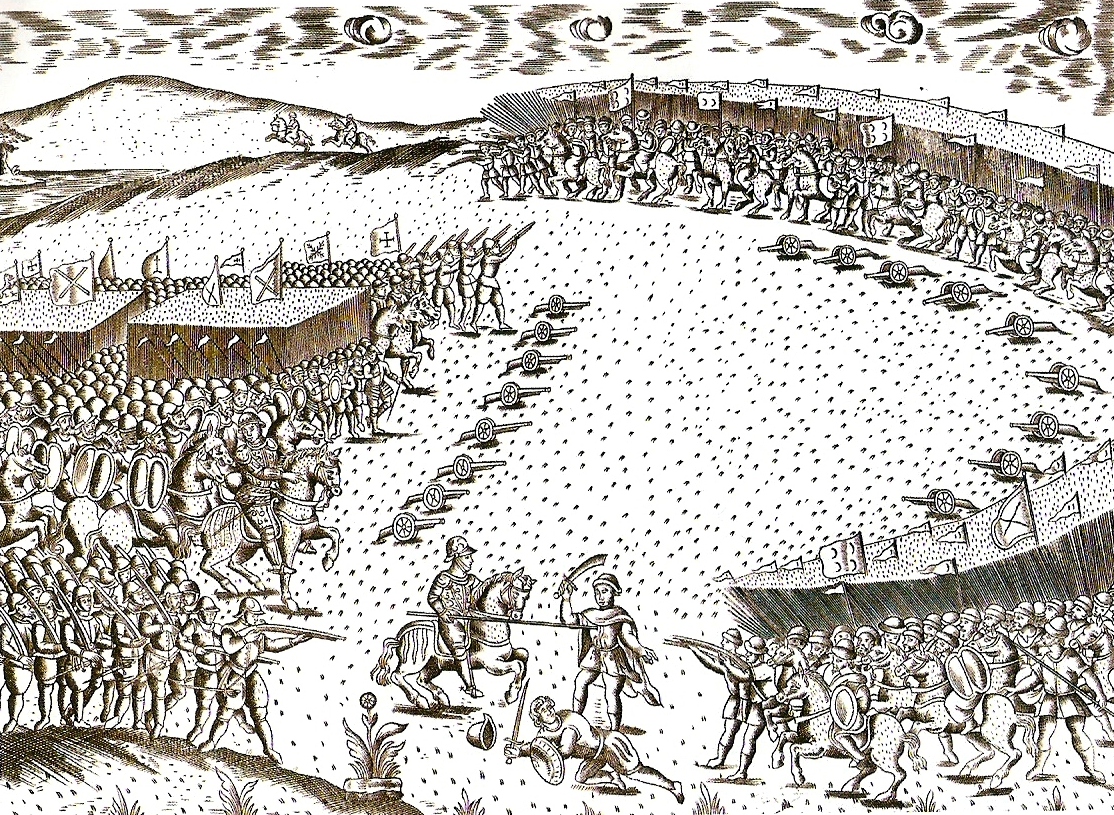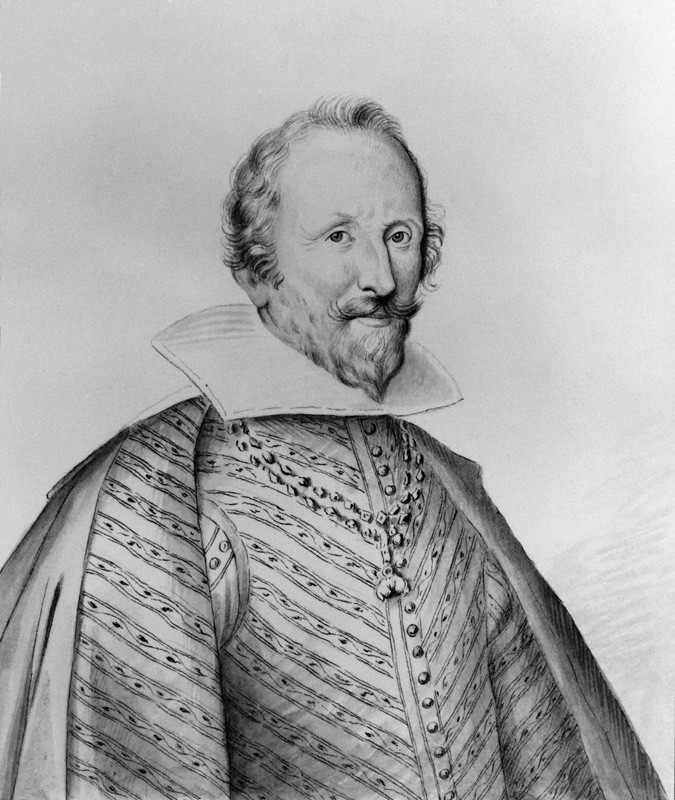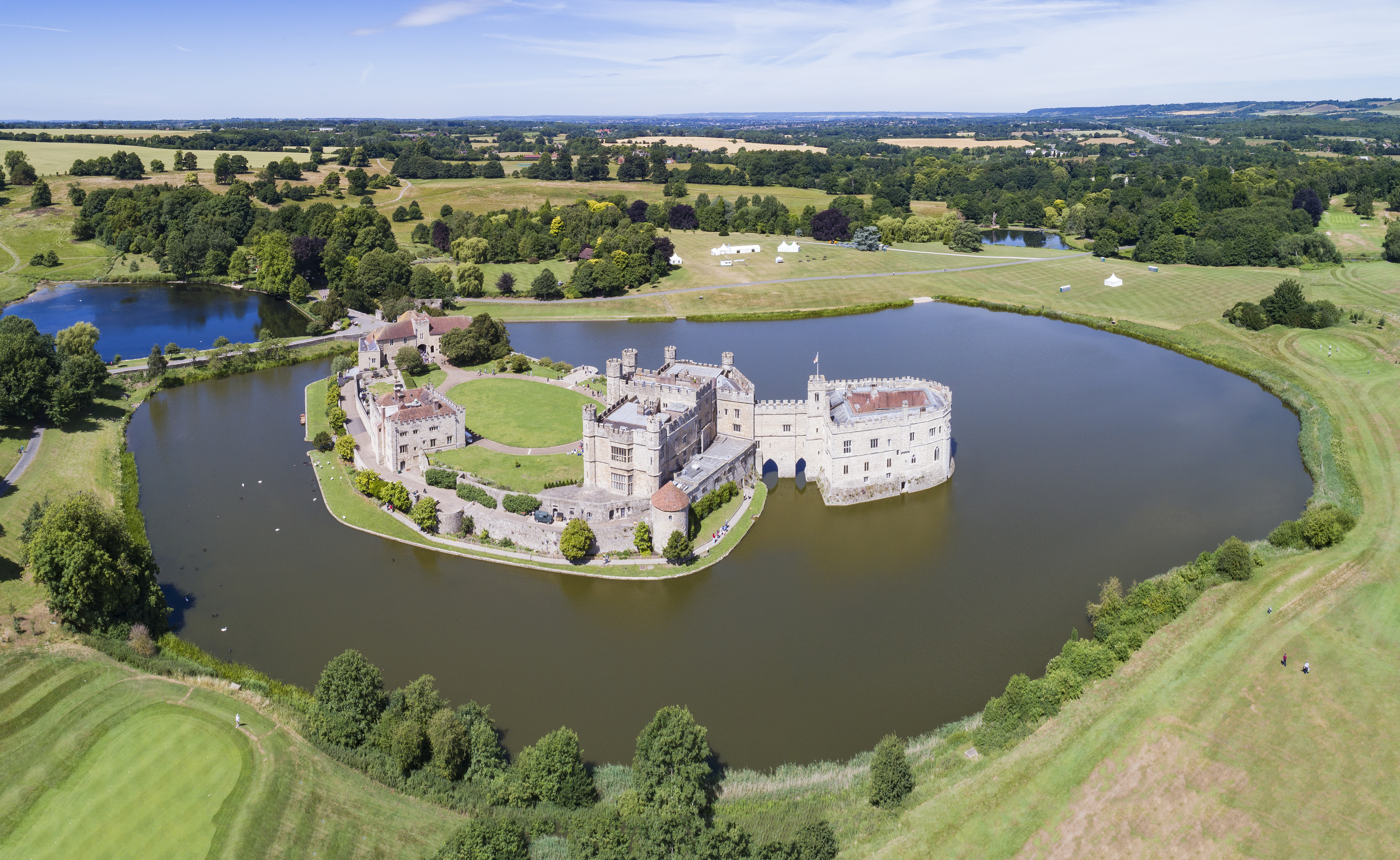|
Thomas Colepeper (Royalist)
Sir Thomas Colepeper (1578 – January 1661) was an English politician who sat in the House of Commons at various times between 1614 and 1629. He supported the Royalist cause in the English Civil War. He is known also as a writer on usury. Life Colepeper was the third son of Francis Colepeper of Hollingbourne Manor, Kent, and the eldest by his second wife Joan Pordage (died 1597), daughter of John Pordage of Rodmersham, and widow of William Stede of Harrietsham. He matriculated at Hart Hall, Oxford on 15 October 1591 at the age of 13. His father died the same year, and left him his favourite house, Greenway Court. He entered Middle Temple in 1594. Career In 1614, Colepeper was elected Member of Parliament for Chippenham in the Addled Parliament. He was knighted on 23 September 1619. In 1628 he was elected MP for Tewkesbury and sat until 1629 when King Charles I decided to rule without parliament for eleven years. Colepeper had a large estate at Hasleton near Northleach, ... [...More Info...] [...Related Items...] OR: [Wikipedia] [Google] [Baidu] |
House Of Commons Of England
The House of Commons of England was the lower house of the Parliament of England (which incorporated Wales Wales ( cy, Cymru ) is a Countries of the United Kingdom, country that is part of the United Kingdom. It is bordered by England to the Wales–England border, east, the Irish Sea to the north and west, the Celtic Sea to the south west and the ...) from its development in the 14th century to the union of England and Scotland in 1707, when it was replaced by the House of Commons of Great Britain after the 1707 Act of Union was passed in both the English and Scottish parliaments at the time. In 1801, with the union of Great Britain and Republic of Ireland, Ireland, that house was in turn replaced by the House of Commons of the United Kingdom. Origins The Parliament of England developed from the Magnum Concilium that advised the English monarch in medieval times. This royal council, meeting for short periods, included ecclesiastics, noblemen, and representatives of th ... [...More Info...] [...Related Items...] OR: [Wikipedia] [Google] [Baidu] |
Northleach
Northleach is a market town and former civil parish, now in parish Northleach with Eastington, in the Cotswold district, in Gloucestershire, England. The town is in the valley of the River Leach in the Cotswolds, about northeast of Cirencester and east-southeast of Cheltenham. The 2011 Census recorded the parish's population as 1,854, the same as Northleach built-up-area. Manor Northleach seems to have existed by about AD 780, when one Ethelmund son of Ingold granted 35 '' tributarii'' of land to Gloucester Abbey. The abbey later granted estates including Northleach to Ealdred, Bishop of Worcester, probably in about 1058 when he had the abbey church rebuilt. In 1060, Ealdred was translated to York, taking the lordship of Northleach with him. The Domesday Book of 1086 assessed the manor of Northleach at 37 hides. In 1095 a later Archbishop of York, Thomas of Bayeux, restored manors including Northleach to Gloucester Abbey. His successors disputed this until 1157, when the ... [...More Info...] [...Related Items...] OR: [Wikipedia] [Google] [Baidu] |
1661 Deaths
Events January–March * January 6 – The Fifth Monarchists, led by Thomas Venner, unsuccessfully attempt to seize control of London; George Monck's regiment defeats them. * January 29 – The Rokeby baronets, a British nobility title is created. * January 30 – The body of Oliver Cromwell is exhumed and subjected to a posthumous execution in London, along with those of John Bradshaw and Henry Ireton. * February 5 – The Shunzhi Emperor of the Chinese Qing Dynasty dies, and is succeeded by his 7-year-old son the Kangxi Emperor. * February 7 – Shah Shuja, who was deprived of his claim to the throne of the Mughal Empire by his younger brother Aurangzeb, then fled to Burma, is killed by Indian troops in an attack on his residence at Arakan. * February 14 – George Monck’s regiment becomes ''The Lord General's Regiment of Foot Guards'' in England (which later becomes the Coldstream Guards). * March 9 – Following the death of his me ... [...More Info...] [...Related Items...] OR: [Wikipedia] [Google] [Baidu] |
1578 Births
__NOTOC__ Year 1578 ( MDLXXVIII) was a common year starting on Wednesday (link will display the full calendar) of the Julian calendar. Events January–June * January 31 – Battle of Gembloux: Spanish forces under Don John of Austria and Alexander Farnese defeat the Dutch; Farnese begins to recover control of the French-speaking Southern Netherlands. * April 27 – The Duel of the Mignons claims the lives of two favorites of Henry III of France, and two favourites of Henry I, Duke of Guise. * May 26 – The '' Alteratie'' in Amsterdam ends Catholic rule, and opens Catholic worship there. * May 31 – Martin Frobisher sails from Harwich, England to Frobisher Bay, Canada, on his third expedition. * June 11 – Humphrey Gilbert is granted letters patent from the English crown to establish a colony in North America. July–December * July – Martin Frobisher holds the first Thanksgiving celebration by Europeans in North America, on ... [...More Info...] [...Related Items...] OR: [Wikipedia] [Google] [Baidu] |
Sir William Hicks, 1st Baronet
Sir William Hicks, 1st Baronet (1596 – 9 October 1680), of Beverston, in Gloucestershire, and of Ruckholt, at Leyton in Essex, was an English Member of Parliament. Early life William Hicks was born in 1596. He was the son of the wealthy courtier Sir Michael Hicks, who was secretary to Lord Burghley during the reign of Queen Elizabeth, and wife Elizabeth Coulston; Burghley was his godfather, and he was named William in Burghley's honour. He inherited a substantial estate, including Beverstone Castle, on his father's death in 1612, and on 21 July 1619 was created a baronet. It is said in the ''Dictionary of National Biography'' that he was educated at Trinity College, Cambridge, though this is not confirmed by the Venn reference work on Cambridge graduates. Career Hicks served in two Parliaments as member for Great Marlow, that of 1625–6 and once more in the Short Parliament of 1640. During the Civil War he was a staunch Royalist, and saw action at the Siege of Co ... [...More Info...] [...Related Items...] OR: [Wikipedia] [Google] [Baidu] |
Baptist Hicks, 1st Viscount Campden
Baptist Hicks, 1st Viscount Campden (1551 – 18 October 1629) was an English cloth merchant and politician who sat in the House of Commons between 1621 and 1628. King James I knighted Hicks in 1603 and in 1620 he was created a baronet. He was MP for Tavistock in the House of Commons of 1621 and for Tewkesbury in the parliaments of 1624, 1625, 1626 and 1628. In 1628, he was elevated to the peerage as Baron Hicks, of Ilmington in the County of Warwick, and Viscount Campden, of Campden in the County of Gloucester, with remainder to his son-in-law, Edward Noel, husband of his daughter Juliana. Early life Hicks was the youngest of six sons born to Robert and Juliana Hicks, and the grandson of John Hicks of Tortworth. His father died while Baptist was only a child. His mother was a moneylender and he was one of three sons who survived childhood. The others were Clement and Michael Hickes. Baptist Hicks matriculated at Trinity College, Cambridge, in 1568 and was admitted ... [...More Info...] [...Related Items...] OR: [Wikipedia] [Google] [Baidu] |
Dudley Digges
Sir Dudley Digges (19 May 1583 – 18 March 1639) was an English diplomat and politician who sat in the House of Commons between 1610 and 1629. Digges was also a "Virginia adventurer," an investor who ventured his capital in the Virginia Company of London; his son Edward Digges would go on to be Governor of Virginia. Dudley Digges was responsible for the rebuilding of Chilham Castle, completed in around 1616. Early life Digges was the son of the mathematician Thomas Digges of Digges Court, Barham, Kent, and Anne St Leger (d. 1636), the daughter of Warham St Leger. Dudley matriculated at University College, Oxford on 18 July 1600, when aged 17, and was awarded BA on 1 July 1601. Career in politics Digges was knighted by James I at Whitehall on 29 April 1607. In 1610, he was elected Member of Parliament for the newly enfranchised constituency of Tewkesbury. He was a friend of Henry Hudson and, in 1610, he was one of those who fitted out Hudson for his last voyage. ... [...More Info...] [...Related Items...] OR: [Wikipedia] [Google] [Baidu] |
John Colepeper, 1st Baron Colepeper
John Colepeper, 1st Baron Culpeper ( – 11 July 1660) was an English peer, military officer and politician who, as Chancellor of the Exchequer (1642–43) and Master of the Rolls (1643) was an influential counsellor of King Charles I during the English Civil War, who rewarded him with a peerage and some landholdings in Virginia. During the Commonwealth he lived abroad in Europe, where he continued to act as a servant, advisor and supporter of King Charles II in exile. Having taken part in the Prince's escape into exile in 1646, Colepeper accompanied Charles in his triumphant return to England in May 1660, but died only two months later. Although descended from Colepepers of Bedgebury, Sir John was of a distinct cadet branch settled at Wigsell in the parish of Salehurst. Colepeper of Wigsell The Colepeper family resided in Kent and Sussex during the later Middle Ages, and certain of them served in administrative capacities (particularly as High Sheriffs of Kent and in the ste ... [...More Info...] [...Related Items...] OR: [Wikipedia] [Google] [Baidu] |
Cheney Culpeper
Sir Cheney Culpeper (1601–1663) was an English landowner, a supporter of Samuel Hartlib, and a largely non-political figure of his troubled times, interested in technological progress and reform. His sister Judith was the second wife of John Colepeper, 1st Baron Colepeper. Landowner He was the eldest son of Sir Thomas Colepeper of Hollingbourne, Kent and Elizabeth Cheney of Guestling, Sussex. After legal training, he was knighted in 1628. He had an estate at Great Wigsell, which he bought from his brother-in-law Lord Colepeper, but had possession of it only briefly. He bought in 1650 Elmley, Worcestershire. He lived mainly at Leeds Castle, which his father had purchased for his sons in 1632. Being later disinherited by his father, he became heavily indebted. During the English Civil War, he was a convinced Parliamentarian, unlike his father who was a staunch Royalist, and sat on the County Committee for Sequestration. This clash of opinions no doubt explains his fath ... [...More Info...] [...Related Items...] OR: [Wikipedia] [Google] [Baidu] |
Sussex
Sussex (), from the Old English (), is a Historic counties of England, historic county in South East England that was formerly an independent medieval Anglo-Saxons, Anglo-Saxon Kingdom of Sussex, kingdom. It is bounded to the west by Hampshire, north by Surrey, northeast by Kent, south by the English Channel, and divided for many purposes into the Ceremonial counties of England, ceremonial counties of West Sussex and East Sussex. Brighton and Hove, though part of East Sussex, was made a unitary authority in 1997, and as such, is administered independently of the rest of East Sussex. Brighton and Hove was granted city status in the United Kingdom, city status in 2000. Until then, Chichester was Sussex's only city. The Brighton and Hove built-up area is the 15th largest conurbation in the UK and Brighton and Hove is the most populous city or town in Sussex. Crawley, Worthing and Eastbourne are major towns, each with a population over 100,000. Sussex has three main geographic su ... [...More Info...] [...Related Items...] OR: [Wikipedia] [Google] [Baidu] |
Guestling
Guestling is a village and civil parish in the Rother district of East Sussex, England. The village is located north-east of Hastings on the A259 road to Rye. Its parish church is dedicated to St Laurence. History Guestling, referred to in the Domesday Book (1086) as ''Gestelinges'', was originally named as a settlement of the family of a man named ''Gyrstel''. The Domesday entry records that the village consisted in 1086 of 21 households, 14 villagers and 7 cottagers. In 1542, Gregory Martin was born in Guestling and went on to do the majority of the translation for the Douay–Rheims Bible, the first full official Catholic English Bible translation. In 1896, hand made bricks were first produced in Guestling, which would go on to be used in Royal locations such as Buckingham Palace and Hampton Court. In June 2017, Brian Bellhouse was trampled to death by a herd of cows in a field at Church Lane, Guestling. Geography The village of Guestling is located from the coast, an ... [...More Info...] [...Related Items...] OR: [Wikipedia] [Google] [Baidu] |
Leeds Castle (2004a)
Leeds Castle is a castle in Kent, England, southeast of Maidstone. It is built on islands in a lake formed by the River Len to the east of the village of Leeds. A castle has existed on the site since 857. In the 13th century, it came into the hands of King Edward I, for whom it became a favourite residence; in the 16th century, Henry VIII used it as a dwelling for his first wife, Catherine of Aragon. The present castle dates mostly from the 19th century. It has been open to the public since 1976. History Medieval and Tudor From 857, the site was owned by a Saxon chief called Led or Leed who built a wooden structure on two islands in the middle of the River Len. In 1119, Robert de Crevecoeur rebuilt it in stone as a Norman stronghold and Leeds Castle descended through the de Crevecoeur family until the 1260s. What form this Norman stronghold took is uncertain because it was rebuilt and transformed in the following centuries. Adrian Pettifer speculates that it may ha ... [...More Info...] [...Related Items...] OR: [Wikipedia] [Google] [Baidu] |


.jpg)




.jpg)
